Last Updated on August 30, 2023
You may find it hard to access the right information on the internet, so we are here to help you in the following article, providing the best and updated information on how to teach yourself the violin, how to play the violin step-by-step. Read on to learn more.We at collegelearners .com have all the information that you need about how to learn violin without a teacher. Read on to learn more.
how to learn the violin on your own

Whenever anyone says, “Wow! You play so many instruments! How did you learn?,” I often say: “mostly, I taught myself!” Sure, I had many inspiring musicians around me to talk with and to learn from – but except for the violin, I have never taken any consistent formal lessons on any of the instruments I play. Essentially, I learned to play most instruments on my own. Over the years I have taught myself the piano, the guitar, and many other instruments to be able to play with them in bands & music groups. Combined with the fact that I am a violin teacher and violinist for 16+ years, I feel I have valuable information to share on how you can go about learning the violin on your own. So, what were my tricks? How did I learn so many instruments on my own? And how can you go about learning the violin by yourself? There’s no getting away from the fact that it takes a long time and a lot of personal dedication. Anyone who says you can learn the violin in just a few months is lying. You might be able to play a simple tune after a quick crash course with a violin teacher, but it won’t be enough to join a jam session, play in an orchestra or even play along with a play-along without scratching and squeaking. (If you’d like to see what you could realistically learn as an adult beginner in 1-5 years of playing the violin with video examples, you might like to read my article “How Long Does it Actually Take to Learn the Violin?”). The key is to learning to play any instrument well, including the violin, is to throw yourself into the deep end. During the time I made the most progress, I practiced every day, almost all my friends were musicians and basically, music was the center of my whole life for a while. As a young girl, I created lists in my diary of how much I had practiced which instrument to discipline myself to practice more. It was difficult sometimes, to practice new instruments and compare myself with all the awesome musicians I had around me. But I also believe it was vital to my success because it was a constant reminder that I needed to practice. One thing that was extremely helpful in learning new instruments, is that I slowly developed ways to practice that worked for me and helped me to learn a new instrument more quickly. So, this is my personal advice to learn the violin by yourself, which includes all the strategies I used and proved to be very helpful to me.
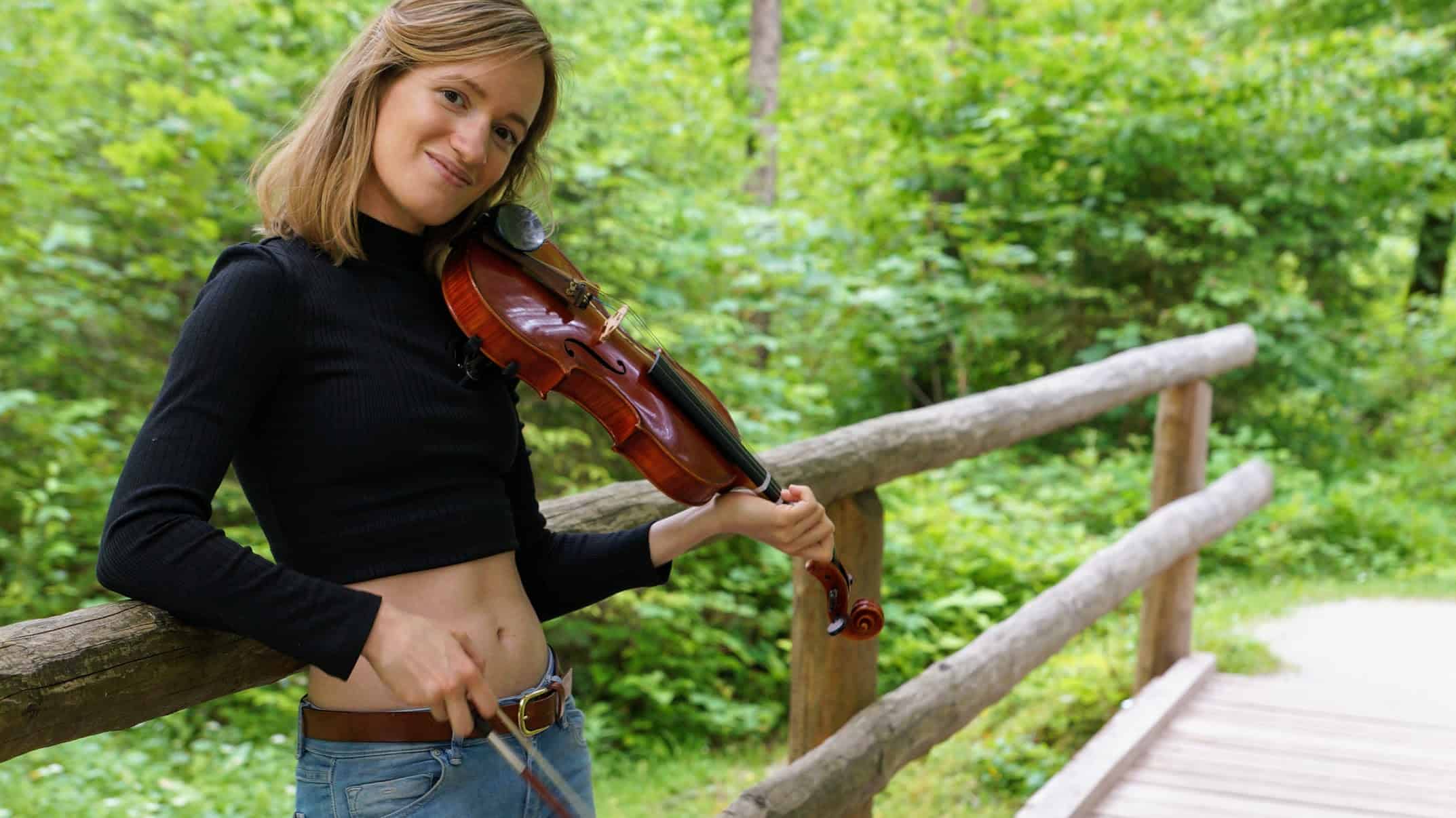
How to Learn the Violin by Yourself in 6 (Not-so) Simple Steps
1. Spend at least 30 minutes a day practicing scales & basic violin exercises
Wait! Don’t leave the article just yet. I know you probably don’t like practicing scales. Most of my violin students don’t like scales when they first start playing. After all, we started playing the violin to play our favorite songs. Not to practice boring scales, right? Funnily enough, after a while most of my violin students LOVE to practice their scales. The thing is, if you want to learn the violin effectively (and not take 20+ years to play a tune beautifully) practicing scales is THE way to go. You could see practicing scales as a highway to better intonation. Of course, you will also learn intonation when practicing songs. But when you practice your scales and arpeggios, you will learn it 3 times faster. Scales are the best way to focus on all the basics aspects of your playing: intonation, violin hold, bow hold, tone production… And if you notice how fast you start improving at violin playing, you don’t want to go back. If you practice scales and exercises, make sure that you choose ones that will progressively get more difficult. In that way you will get to learn new techniques with every scale and exercise that you practice. So start practicing scales right from the start, to make sure you will learn as effectively as possible.
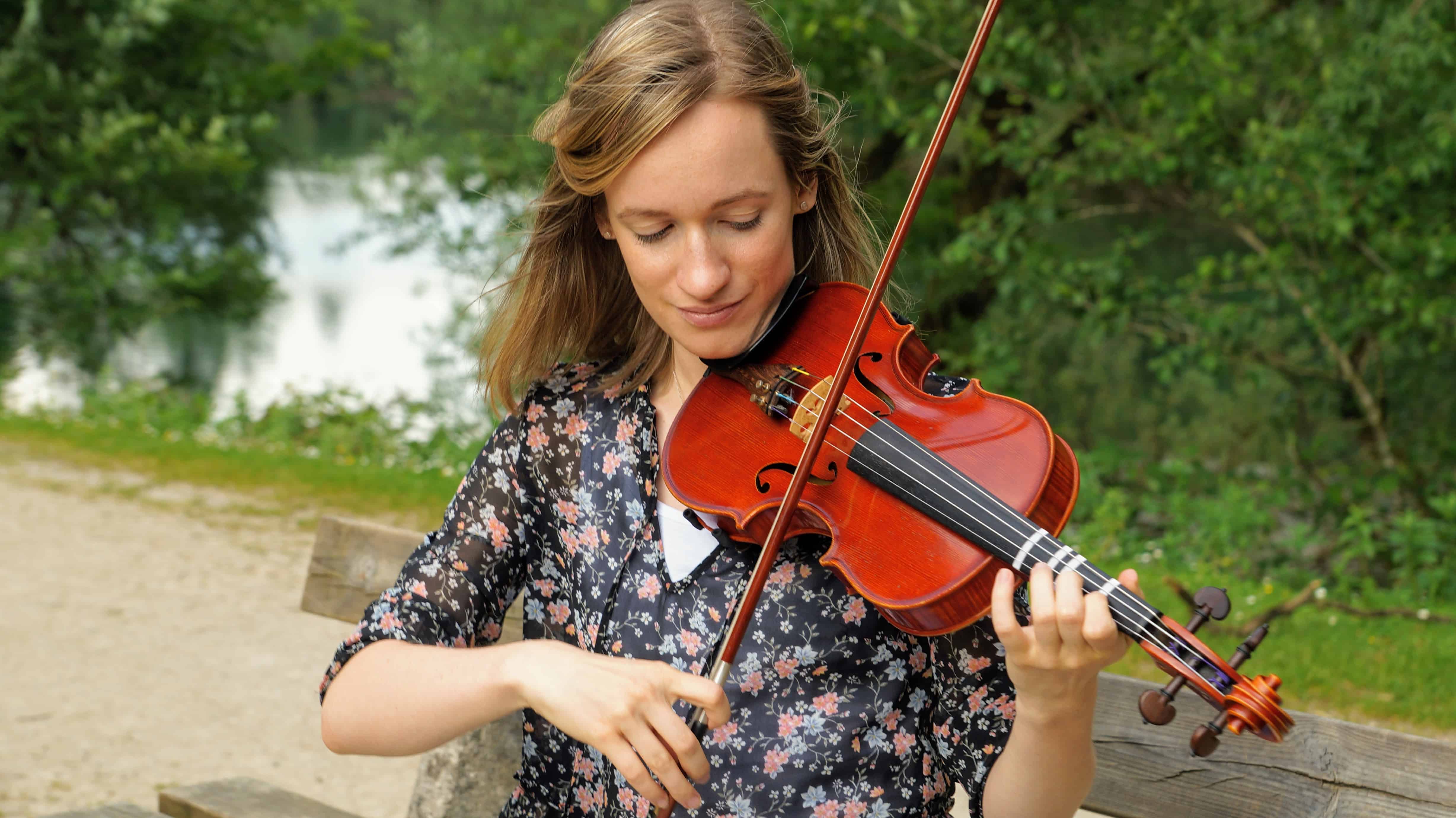
2. Practice pieces, take the hardest parts out and practice only those
If there would be ONE secret to learning to play the violin beautifully by yourself, it would be: LISTEN TO YOURSELF! If you don’t have a teacher, this skill is especially important. If you practice for hours a day, but don’t listen well to yourself and analyze your playing for mistakes, you might make no progress at all. If you practice your pieces, make sure to listen very well to yourself. Do you like the way it sounds? Is it in tune? Do you use the correct bowing technique to make it sound pretty? And if not, how could you improve it? Then, only focus on those areas of your playing that you wish to improve. Sometimes it is very difficult to listen to yourself while you are playing at the same time. Especially when you are just starting out with learning the violin, there is so many things you already have to look for: correct bow hold, violin position, if your fingers are in the right place. It gets even harder if you also have to analyze yourself at the same time. So how do you go about it? The simple answer is: your phone! Video tape yourself while you are practicing and look back it afterwards to analyze your playing. In my online violin academy for adults, Julia’s Violin Academy, my students can submit their personal videos for feedback to Victoria. Victoria is our 2nd violin teacher at Julia’s Violin Academy. As an assistant concertmaster of the Manila Philharmonic Orchestra and solo violinist in many musicals and film productions, we are proud to call her a teacher at our Academy! And I have noticed something fun!
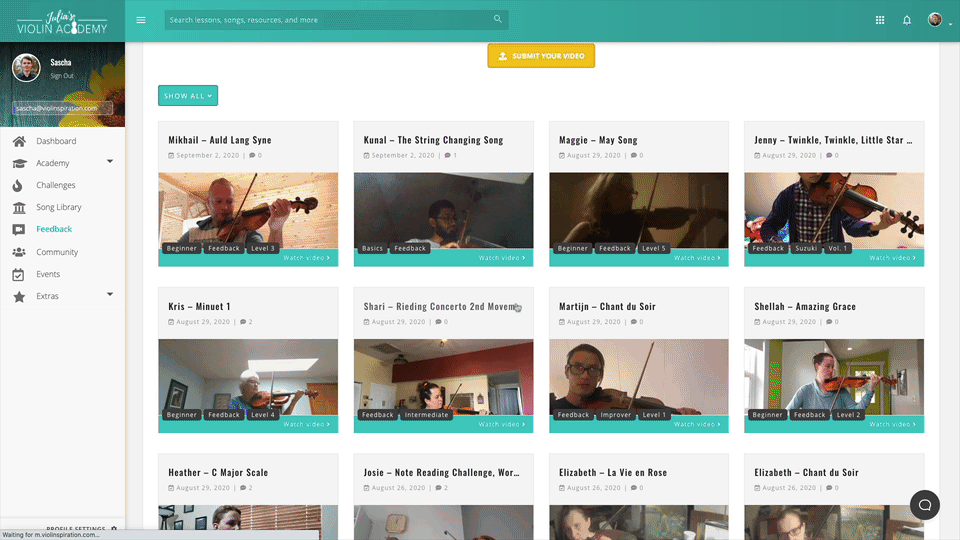
Often my students have already learned so much from recording the video, even BEFORE they sent the video in! Just by watching themselves play, they became aware of mistakes they made that they didn’t realize before.

3. Listen to violin music as much as possible
One of the things that is so difficult about violin playing, is that you need to have a very good ear in order to have proper intonation. One of the best ways to develop your ear is: LISTENING to music! Especially violin music. When I first started playing violin I listened to violin music every day, almost without a break. I listened to all the famous violin concerto’s, Bach, orchestral pieces and even listened to the CDs of my Suzuki Violin Method book on repeat… If you want to optimally use your time, make sure to listen to violin music as much as possible, so you will develop your ear and get a better feeling for musicality, rhythm, and intonation.
4. Watch other, more experienced violinists play
And don’t only watch them, but try to analyze them at the same time. What kind of bowing techniques are they using? At which part of the string are they playing to get their tone as a result? When you watch other violinists play, you will learn a lot, even when not being consciously aware of it. If you have a chance, go to local concerts. If you live in a city, there are often many opportunities to go to smaller violin concerts for a low price. Many music schools will even offer you to watch the concerts of their students for free, so they will have an audience to practice performing with. Immerse yourself in an environment where you constantly see other violinists play.
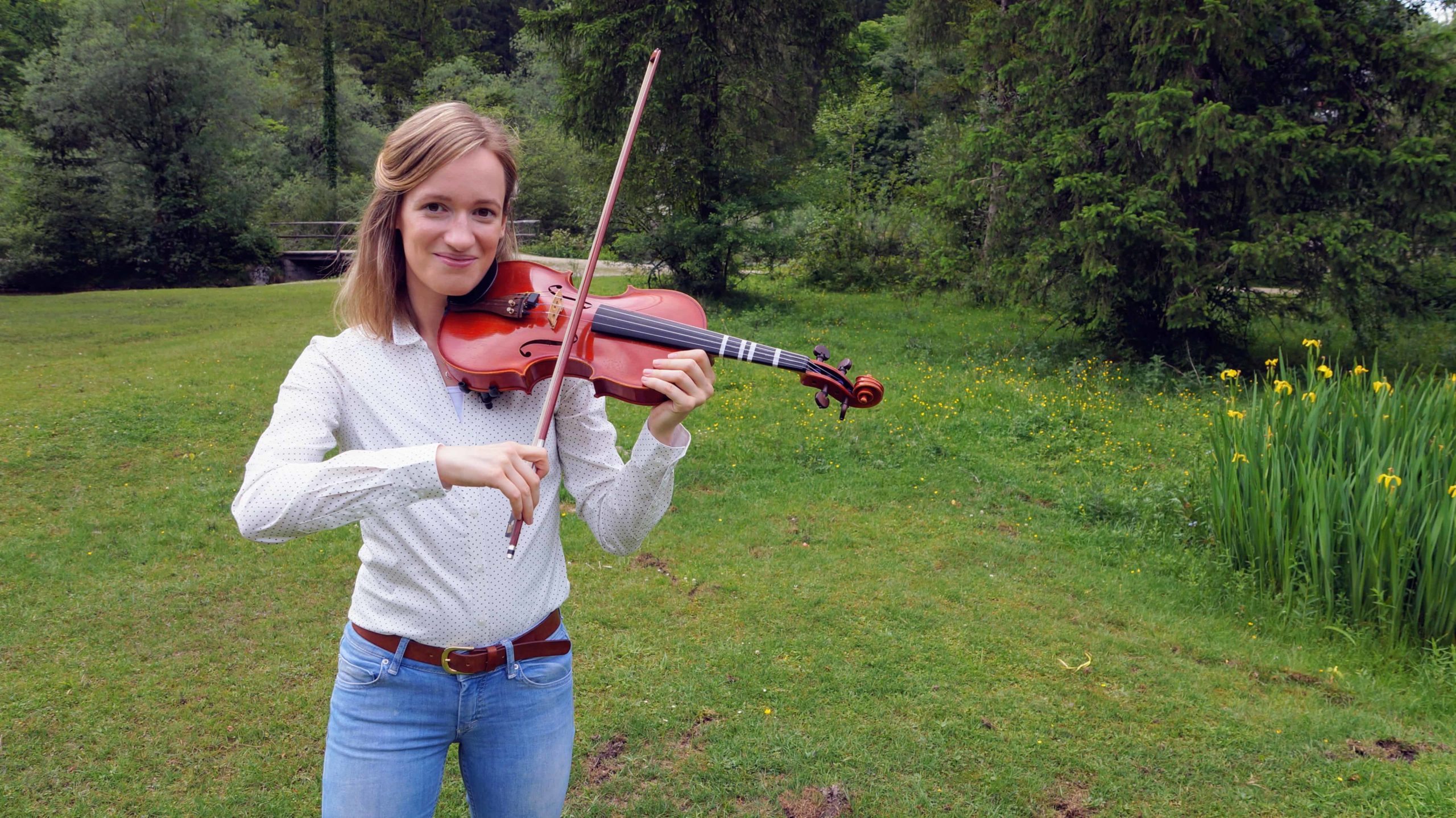
5. Make friends with other violin players
Did you ever hear the saying “You are the average of the 5 people closest to you?”. Well, it’s true! It is much easier to learn to play the violin in a supportive environment with friends that understand your passion for music and why you are practicing for hours a day to learn an instrument. Learning the violin is very difficult. If you are going to do it well, you need supportive people around you to help you with it. Your violin friends will understand your struggles and motivate you to keep pushing forward. They will remind you that it is normal that you are sounding like a crying cat for at least a few months and that it is part of the process. They will really be understanding the difficulty of the pieces you play and how much you have practiced to get there. Your violinists friends will give you the strength to keep practicing. I feel like one of the biggest contributors to my ability to play many instruments, is having a friend group and family that was very supportive of me taking time to practice and that motivated me to keep pushing through.
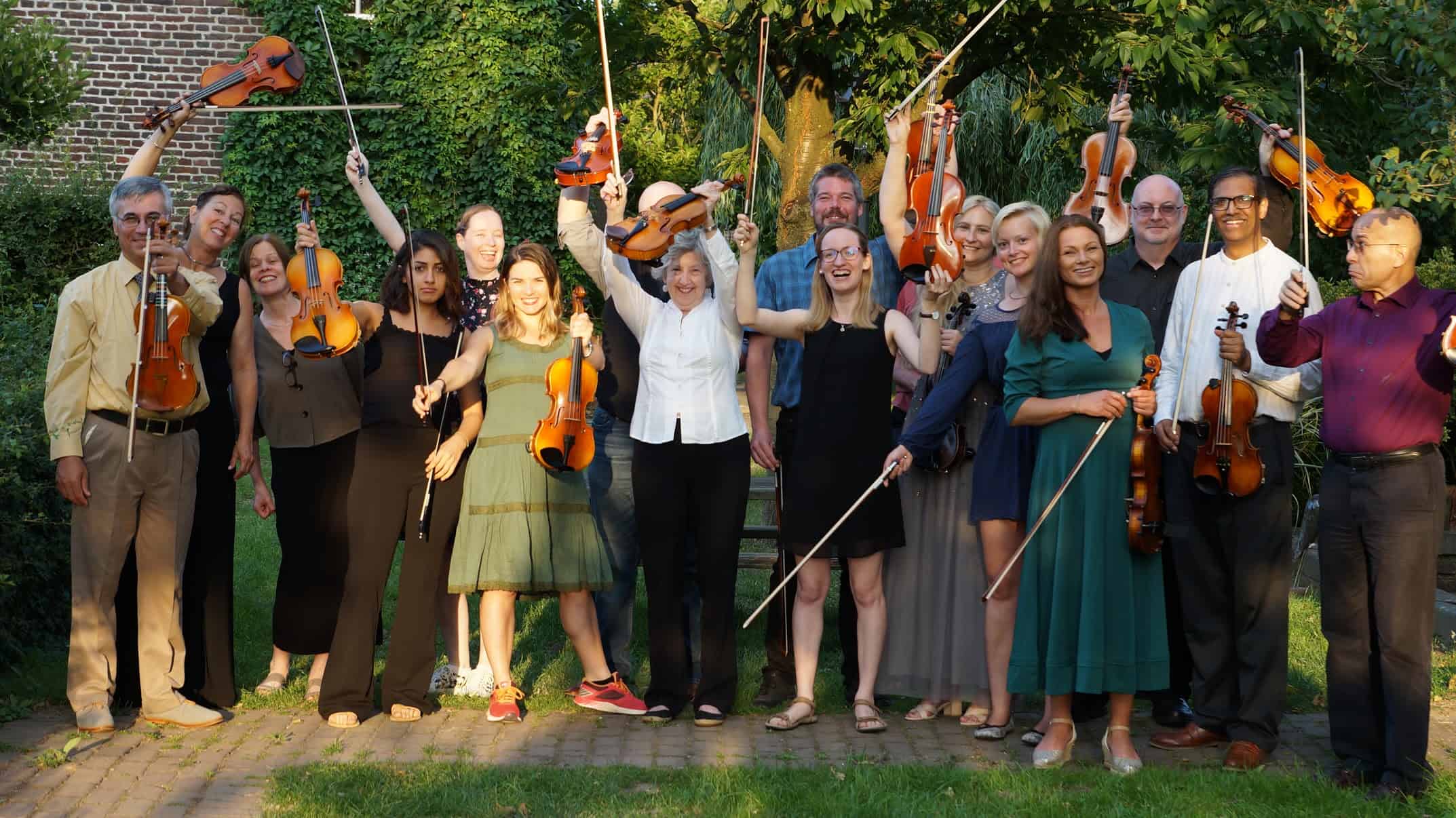
6. Find a bigger purpose to your practice mission
Ask yourself why do you want to learn the violin….. Do you want to connect more with other people in your life? Would you like to have a creative outlet? Do you want to join the jam session or orchestra in your town? Do you want to learn something amazing to remind yourself of what you are capable? Do you want to be a part of long lasting family traditions of playing an instrument? Is it a long childhood dream that you want to fulfill? If you have cleared for yourself WHY you want to learn the violin you will find the motivation to keep practicing, even in times that it is very difficult and seems impossible to learn the violin. So there you have it, 6 steps to learning the violin on your own. Follow these steps along or a similar path, and there will come a day when someone compliments your violin playing and inquires how you learned to play the violin so well. And then, you can proudly respond, “I taught myself!”
If you want to become a violinist, make sure to check out my post “How to Play the Violin: The Complete Step-by-Step Guide” with more technical instructions from buying an instrument to playing in a band or orchestra. Enjoy!5
How to Play the Violin: The Complete Step-by-Step Guide
Do you want to learn how to play the violin? Perhaps you’ve dreamed about becoming a great violinist. Are you curious about what you need to know or do to achieve this goal? If so, you’ve come to the right place. I’m happy to share a list of 35 steps you can take to play the violin and fulfill your dream of progressing from a novice student, to an intermediate player, and finally, a seasoned violinist.
The Right Equipment
If you want to start off your journey on the right foot when learning how to play the violin, begin with the right equipment.
1. Find a Proper Beginner Violin
This is much easier said than done. Given the variety of options out there, selecting the right violin for you can feel overwhelming. Be sure to take your time, as this is an important decision.
The first few years spent learning how to play the violin can be difficult. Thankfully, a high-quality violin will produce a wonderful sound and be easier to play when you embark on this journey—encouraging you and helping with your progress. On the flip side, a violin of lesser quality with a poor sound that is difficult to play can discourage students, who may not even want to play at all because of this!
Know Your Options: Buy or Rent
First, decide if you are going to buy or rent a violin.
Renting a violin is a good idea when:
- You are unsure if you will like playing the violin. In this way, you avoid investing too much into the instrument if you ultimately decide that playing the violin is not for you.
- You need a violin size of ½ or smaller. As a young student grows and the body is changing, there is a need to increase the violin size on a frequent basis. This can get very expensive if you choose to buy the instrument.
Buying is a good idea because:
- Long-term rental instrument fees can add up. It’s important to know that you can buy a quality entry-level violin for a cost that rivals about one year of rental fees.
- A well-chosen violin will maintain its value. If you buy from a violin shop, most outfitters allow you to trade in your instrument for an upgrade, which can help offset the cost of a new and improved violin.
- There are often liabilities for any damage that occurs to a rented instrument.
- Many rented instruments are not in the best condition. Common issues include dings and scratches, tape markings or glue on the fingerboard, and so on.
What to look for when buying a violin:
- Quality materials and craftsmanship. Hand-crafted violins are more expensive, but a variety of good-quality violins are in fact mass-produced.
- The body of your violin should be made with a quality wood.
- Check for symmetry and cracks.
- Your fingerboard should be made of ebony, and your pegs should not be plastic (unless you choose to use Wittner Finetune pegs).
- The strings should press down with ease.
- The chin rest should feel comfortable.
- Your shoulder rest should encourage good posture, feeling as natural as possible for you!
Listen to how the violin sounds when someone more experienced plays it. Do you LOVE it?
TIP: If you are left-handed, you can buy either a left-handed violin or the same instrument as a right-handed player. To find more information about this topic, check out my article “Left-Handed Violin Playing: This Is Why You Might Like to Try It.”
Before buying a violin, also be sure to check out my mini guide:
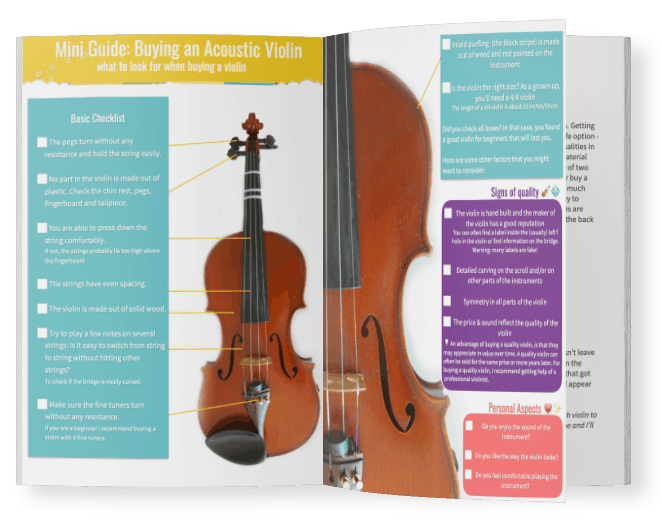
Violin Mini Guide [PDF]
GET IT NOW:DOWNLOAD
Remember that your first violin doesn’t have to be expensive. You can always start with a more affordable alternative and employ strategies to make it sound better.
2. Buy Extra Equipment
To successfully play the violin, you need the following accessories:
- Bow: check out the pros and cons of different types in my article “Violin Bow Materials and Which Ones Are Best”
- Rosin: for useful tips on the best rosin for your own personal sound preferences, click here
- Shoulder rest: to ensure a comfortable hold, learn which shoulder rests are best and how to properly use them
- Chinrest: though your violin is probably already equipped with this, if you don’t have one or believe yours is uncomfortable, see my recommendations here
- Case: to store and travel with your violin, I recommend the Gewa Violin Case Maestro
- Sheet music: scales, concertos, pieces for all levels, and all kinds of fun songs to play
- Music stand: to hold your sheet music, you can choose a lightweight or orchestra stand
- Tuner: you may want to use a separate device or free online tuner
- Metronome: again, this can be a physical device or online app
- Duster cloth: to remove the rosin from your violin after each practice session
Additional accessory options include:
- Fine tuners: for easy tuning
- Practice mute: out of respect for your family and neighbors 😉
- Extra set of strings: in case you break one
- Instrument care kit: for extra cleaning and polishing every so often
Beginner violins usually come with a kit that includes a violin with a chinrest mounted on it, a case and bow, and perhaps also rosin and a shoulder rest. When buying from a violin maker, the bow and case are typically separate.
Prepare the Violin for Playing
3. Tune Your Violin
Tune your violin strings to the correct pitch using one of three possible methods:
- You can use a tuning fork
- A clip-on tuner is also a nice solution
- Employ a tuning app like my free online violin tuner
Check out the following posts to learn how to properly tune a violin:
- How to Tune a Violin as a Beginner
- How to Tune a Violin with the Pegs: A Simple Guide
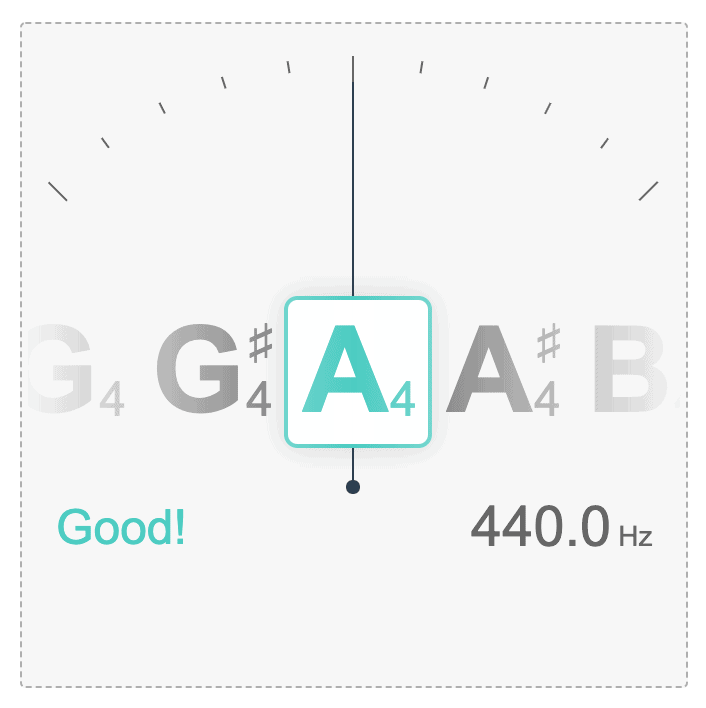
4. Prepare Your Bow
- Tighten the hair on your bow by turning the screw at the end of the frog to the right before you play.
TIP: You can confirm that you have the correct amount of space by placing a pencil between the hair and the stick. The pencil should fit, grazing them both when moved back and forth.
- Rosin your bow: When doing so for the first time, I recommend that you check out my article about the process or head straight to my video about rosining the bow.
Remember: Loosen the bow hair by turning the screw to the left after playing.
Learn How to Hold the Violin and the Bow
5. Learn to Hold the Violin Bow
TIP: Wash your hands before playing your instrument and never touch the bow hair with your fingers to prevent oil transfer from your skin, which attracts dirt and leaves residue behind. If this happens, you will need to get your bow re-haired!
The simplest way to learn how to hold the violin bow is the bunny technique. You can do so in six easy steps! Thereafter, you should work on relaxing your bow hand.
I want to emphasize how a relaxed and correct bow hold is the key to producing a beautiful-sounding tone when you are learning to play the violin: after which you are primed to learn advanced bowing techniques in the future.
6. Perfect Your Violin Hold
Your violin hold should reflect what feels most comfortable for you. This is in relation to the parts of your body needed to execute the violin playing technique—your arm, hand, and fingers—and how you would judge correctness. If you are not comfortable, you can develop pain.
How are you supposed to hold the violin?https://www.youtube.com/embed/E6VvcNVz4B4
You can always practice in front of a mirror and compare your hold with these pictures. This video about elbow and left-hand position is also helpful.
Learn Your First Song on Open Strings
7. Learn to Play on Open Strings
In this way, you will get a feel for bowing without the added difficulty of using your left hand. After all, it’s better to learn one thing at a time until you feel comfortable, and trying to grasp too many things at once will split your focus. Focus on one thing and make it great!
TIP: Learn the signs used in sheet music to know in which direction you should bow.
Up Bow
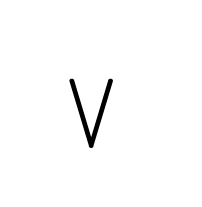
Push the bow up to your left, in the direction of the bow frog.
Down Bow

Pull the bow down to your right, in the direction of the bow tip.
Song on One String
Learn a song on one string. Practice your bow stroke and create a lovely tone. Make sure you maintain correct posture.
Below is a great video that will teach you how to play your first song on the violin!
8. Learn to Change Strings
Learn how to switch strings by finding the right elbow level used for the varied strings. The motion should be gentle, natural, and fluid—not stiff and abrupt.
The video below will teach you how to use your elbow to change strings:
9. Learn Song on Two Strings
You are now ready to learn a song on two strings. Switch between the pair by focusing on your elbow levels.
The video below will show you how to play your second song on the violin:
Learn to Make Use of Your Fingers
Once you are comfortable with simple bowing, you can add the use of your fingers. Each finger has a specific spot on the fingerboard assigned to it for placement, and it’s interesting to note that a violin fingerboard does not have any frets like you would see on a guitar. Violinists put in hours of practice developing their muscle memory, and even more hours training their ears to find the correct pitch of each note.
10. Put Tapes on Your Fingerboard
Beginners use fingerboard tapes as a guide to help them find the correct pitch. Watch my video below to place these on your violin:
For even more details and tips, visit my blog and read the post about DIY fingering tape.
11. Learn Your First Easy Scale
A scale is a sequence of notes ordered by pitch: starting with the lowest pitch and ending with the highest, which is called tonic.
It might seem boring to play this same sequence of notes over and over again, but scales are the superhighway to get better at playing the violin.
Specifically, scales are the best way to improve:
- Intonation
- Timing
- Coordination
- Finger speed
- Muscle memory
- Developing your ear
The number-one scale I recommend that all my students learn first is A Major. You can learn your first scale by watching the video below.
Play Your First Song on the Violin
TIP: Pick a song to play that is in the same key (uses the same scale) as the one you have been practicing. Now familiar with the notes in the scale, it’s easier for you to find and hear the correct notes in the piece.
12. Learn Your First Easy Song on the Violin
Easy violin songs to get started with include:
- Hot Cross Buns
- Mary Had a Little Lamb
- Ode to Joy
- Amazing Grace
- Happy Birthday
- Drunken Sailor (an Irish fiddle piece)
13. Build Your Repertoire
Keep practicing easy songs until you know about ten pieces. Practice them in rotation throughout the week, which will keep them fresh in your memory so you can build out your repertoire.
Hopefully, my Video Lessons Library located on the page with easy arrangements of popular pieces will prove inspirational for you!
Learn to Read Violin Notes
Learning to read notes is a valuable skill for any musician, no matter the instrument played. Notes and music notations tell the player where to put his or her fingers on the fingerboard and which bowing technique to use.
14. Learn to Recognize Open Strings
Learn to recognize which notes on the staff are open strings: serving as your guide to recognize the other notes.
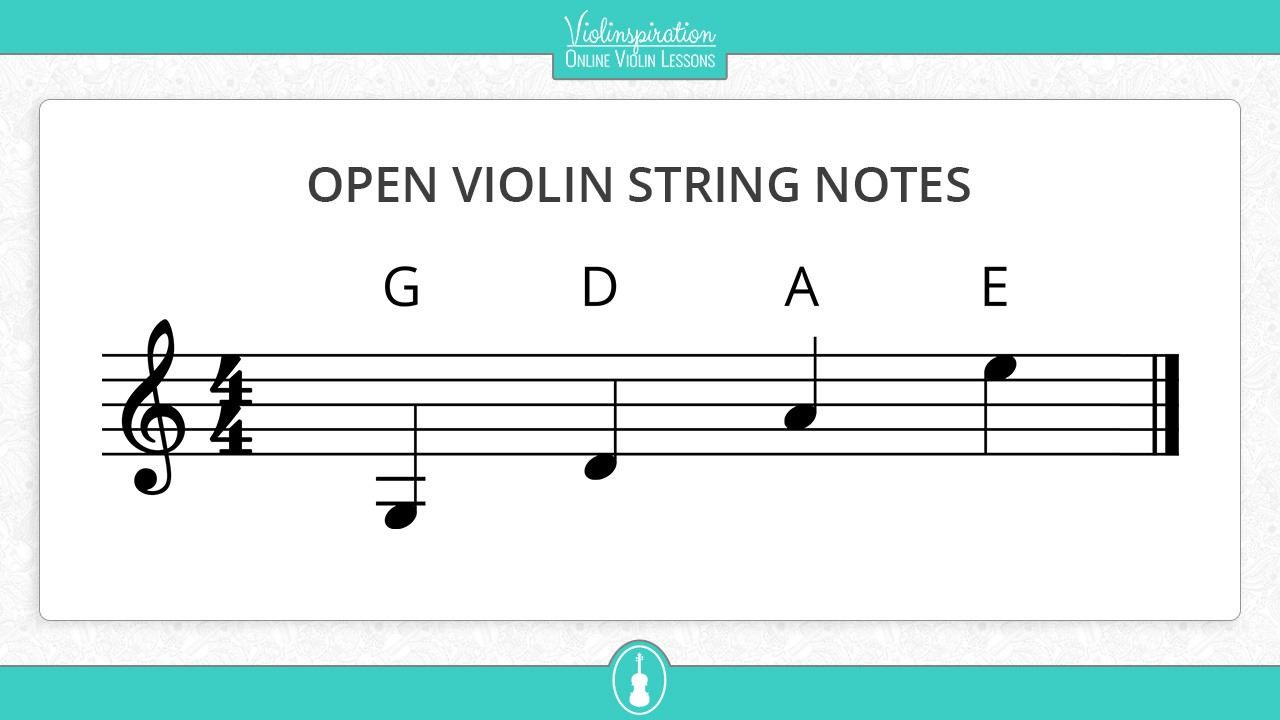
15. Learn to Recognize Other Violin Notes
Learning the other notes in a specific order can be helpful. In the first position on a violin:
- First, learn to recognize all notes on the staff played with your first (or index) finger
- Next, recognize all notes on the staff played with your second finger
- Then, learn to recognize all notes on the staff played with your third finger
- Finally, learn to recognize all notes on the staff played with your fourth (or pinky) finger
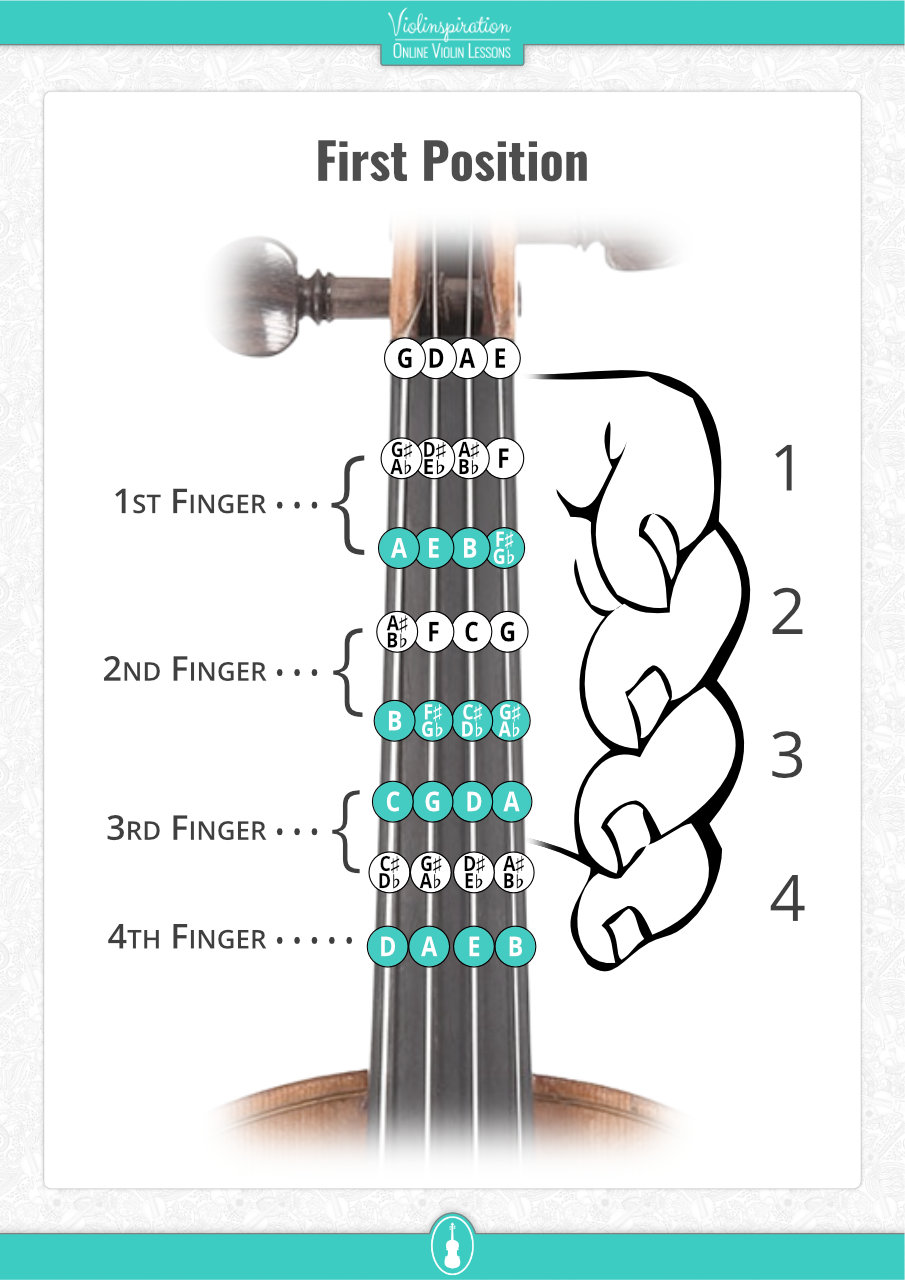
Learning the key signatures will also pay off quickly!
16. Learn to Recognize the Most Common Rhythms
Instruments used to play music are all very different, but what they do have in common is that their music uses the same rhythm patterns. Knowing how to recognize these will be a great benefit to you as a player.
A wonderful way to learn rhythm patterns is by using the Kodaly Method. You can practice this technique by using my special Rhythm Cards. Print the Rhythm Cards – Complete Set and play on your own or with friends or family. You can clap the rhythms, sing or play. No matter which you choose, most importantly—have fun!
Seek Feedback on Your Performance
It is important for your progress to obtain personal feedback from a more experienced violin player.
17. Engage in Violin Lessons
Look to take lessons from an in-person teacher or online tutor. These instructors have experience, lots of knowledge, and personal tips that will help you grow as a musician.
Herein, I would like to invite you to my online violin school for adult beginners: Julia’s Violin Academy. Join to enjoy a step-by-step plan, variety of resources at your fingertips and a community of other violin enthusiasts!
TIP: If you cannot yet afford a teacher, record yourself with a camera and analyze your own performance.
18. Implement Feedback to Improve Your Technique
If you have a full-length mirror, use it to practice and give yourself feedback to improve your technique. You can also use a camera to record yourself playing and analyze areas ripe for refinement.
Another way to obtain feedback is to ask your teacher or—if you are a member of Julia’s Violin Academy—submit your feedback video. Victoria, a professional violinist with a degree in violin performance and violin pedagogy, will answer all your questions and give you tips for improvement.
Learn New Violin Techniques
19. Learn the Most Common Scales and Arpeggios
It’s fun to practice scales and arpeggios when you know the progress you will achieve by doing so.
- If you analyze sheet music, you will stumble upon a variety of hidden scales and arpeggios.
- Do you want to compose your own songs or improvise in jazz or fiddle music? Practicing scales and arpeggios will help you improve, no matter the end goal.
- Do you wish to join a special teaching program, violin exam or orchestra? The audition will dictate that you play scales and arpeggios.
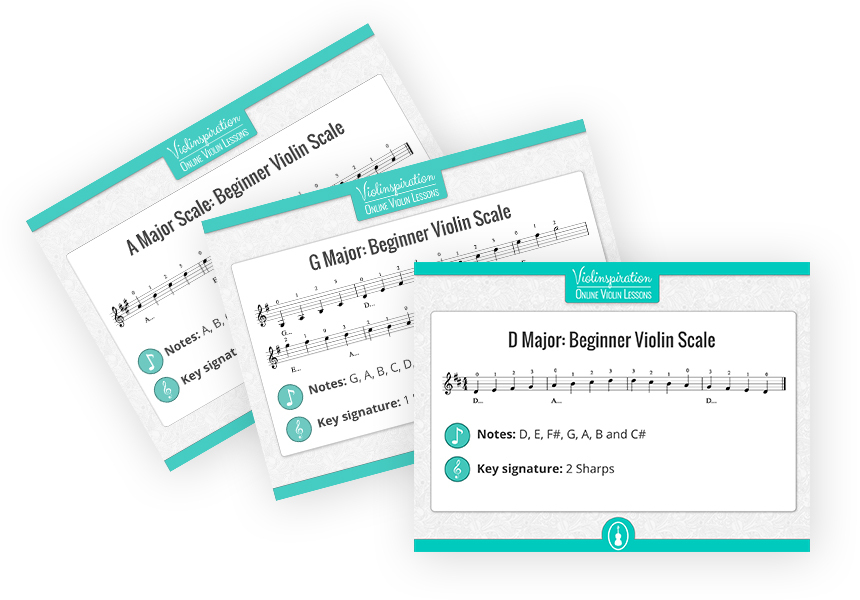
Free Download: 5 Most Common Violin Scales for Beginners
DOWNLOAD
20. Learn All Violin Bowing Techniques
Read my article “All 25 Violin Bowing Techniques with Examples & Symbols” to learn which techniques are used by violinists and how they are notated in the sheet music. Then, watch the video examples.
It will take some time, and remember that you need not master all bowing techniques in the first year of your violin journey. Rather, zero in on one or two at a time and work on them persistently.
This PDF chart will help you learn how to recognize each bowing technique:
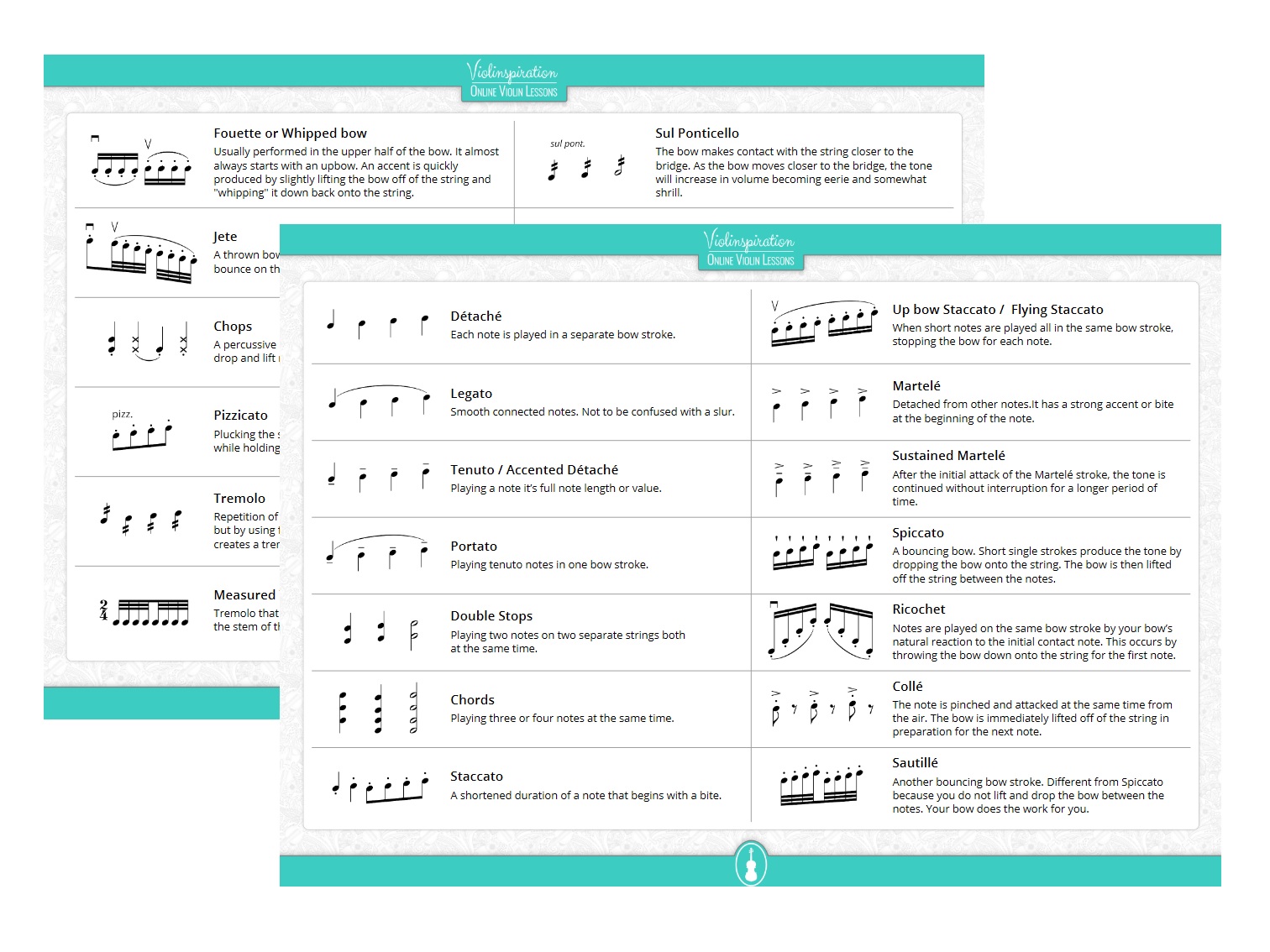
Download Free Bowing Cheat Sheet!
an easy overview of all bowings and signsDOWNLOAD
21. Learn All Left-Hand Techniques
Your left hand is truly a multitasker when playing the violin. The fingers move up and down vertically, changing positions and sometimes moving horizontally depending on the note you are playing. They cross strings, slide, and vibrate.
Ultimately, you should learn seven left-hand violin techniques:
- Trills
- Shifting
- Double Stops
- Glissando
- Harmonics
- Vibrato
- Left-Hand Pizzicato
22. Continually Improve Your Note-Reading Skills
Take your note-reading skills to the next level and learn to understand the musical concepts behind the numbers and beats: opening the doors to execute many different styles of music.
Jazz and swing music are at different tempos. Learn more advanced rhythms, go beyond triplets and learn how to play tuplets. You can hear the composite rhythm in an ensemble. There are syncopation, recurring patterns and many more advanced rhythms to master.
Add Musicality to Your Playing
Actors bring the words on a script to life when telling a story.
Likewise, musicians bring the notes on a piece of sheet music to life when telling a musical story.
This is musicality. Violinists add musicality to a piece by using phrasing and dynamics.
23. Learn About Dynamics and How to Apply Them
Dynamics is how loud or soft you play a particular note or section of music.
You increase the volume by:
- Increasing your bow stroke speed
- Increasing the pressure on the bow stroke
- Playing closer to the bridge
You decrease the volume by:
- Decreasing bow speed
- Decreasing bow pressure
- Playing closer to the fingerboard
TIP: Paying closer to the tip of the bow will also sound a bit softer than playing closer to the frog.
24. Add Musicality to Your Pieces by Learning Phrasing
Phrasing adds musicality to your piece. It separates musical ideas to form musical sentences. A composer who puts his or her notes on paper gives you an idea of how the music should sound. You, the player, makes it your own by deciding how you want to play it.
Listening to how other violinists choose to play the same piece is a great way to learn phrasing. You will be able to hear the subtle differences with respect to altering the tone, tempo, dynamics and articulation.
Track Your Progress
Keep a practice journal, giving you something to look back on and see how far you’ve progressed. This can serve as great encouragement to all violin students.
25. Write Down Your Practice Goals at the Beginning of Each Week
Write down what you plan to practice, and do your best to stick to it! Always have a plan that is specific and goal-orientated.
If you would like a printable copy of a practice plan to keep track of your practice habits, enjoy a free download here:
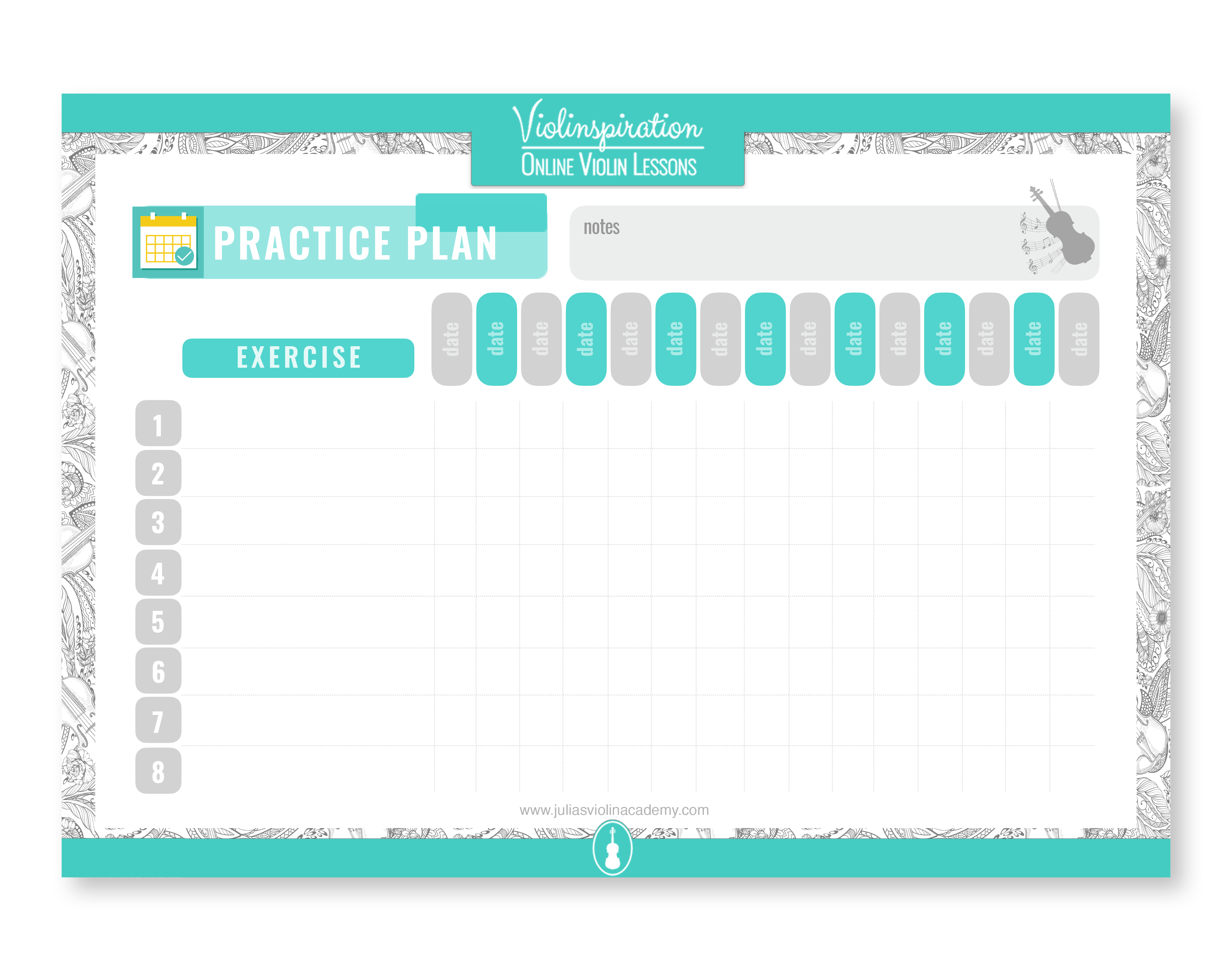
Fillable Practice Plan [PDF]
GET IT NOW:DOWNLOAD
26. Track Your Violin Progress Throughout the Week
Keep tabs on how your plan is going. Ask yourself: What do I need to work more on? Spend additional time next week improving on those areas. What do I do well? Spend less time next week on that. Add something new.
27. Create a “Dream Goal” List of Songs to Learn in the Future
Dreams inspire us. They motivate us to push ourselves so we can achieve them.
Formulate a list of pieces you ultimately want to play. Entitle the list your “Dream Goals” and keep it out where you can see it. Every time you learn a new technique, you are one step closer to reaching your Dream Goal piece. FACT!
28. Share Your Progress with Others
Let other people know about your accomplishments, especially the small ones.
Ok, sure. Your non-violin friends may not appreciate to the full extent, say, what it took for you to master the bow hold. Or that you can skip over a string without hitting it when you bow. What they will appreciate is your excitement when you tell them!
If you are already a member of Julia’s Violin Academy, remember to post your video on the community group each Wednesday to obtain feedback from fellow students, gain motivation and support others!
Learn to Perform
29. Play the Violin for Others
Playing the violin in your room and performing for others are two different things. You have to learn how to perform!
I know the thought of playing for others can sound terrifying, especially when you are a student, but I encourage you to do it anyway. You have your repertoire, and you practice daily. By sharing what you’ve learned with others, this is how you will learn to perform.
Play for friends and family
Start with those closest to you. Play for family and friends first, the people who know the amount of work you’ve put into learning the violin. If they are members of your household, they’ve probably been listening to your progress along the way—hearing you play at both your best and worst—and are sure to support you in your journey.
Play in a recital
Select a piece that is a little easier than what you know you can play. This will balance out any looming nervousness, helping you feel confident in your technique.
At Julia’s Violin Academy, we hold a monthly recital for our members on Zoom. Every member at every skill level is welcome to take part. It is a great supportive community and the perfect place to begin performing.
Click here to watch a live public recital performed by my students in 2020:
30. Join Violin Groups Online
There are many social media groups with like-minded musicians that you can join online. Browse sites like Reddit and Facebook to find the ones you feel fit your interests the best. Check out Meetup. Violinists hailing from all corners of the world offer meetup groups and jam sessions all the time, and there might just be one in your area!
When signing on as a Julia’s Violin Academy student, you are welcome to join the Facebook community group (reserved for JVA members). Herein, you can share your thoughts, struggles, wins, memes, and questions: anything and everything related to playing the violin. Here is a little sneak peek from the group for you:

31. Watch Inspirational Films/Documentaries
There are so many inspiring films and documentaries centered around the violin out there.
Mr. Holland’s Opus (1995), Music of the Heart (1998) and The Soloist (2009) are based on true events.
A classic like Humoresque (1920) is something you may enjoy, or perhaps They Shall Have Music (1939) starring the famous violinist Jascha Heifetz, if that’s more your type.
A documentary about Itzhak Perlman called Itzhak (2017) is also worth watching.
Rounding out my list of recommendations is a must-see (and listen): The Red Violin (1998).
32. Watch Fun Violin Clips on YouTube
You’ll enjoy a good laugh when watching fun violin videos on YouTube. The channels I recommend are:
- TwoSetViolin: Brett and Eddy combine their knowledge of classical violin training with comedy, creating an enjoyable channel you can get lost watching
- Ray Chen: A mixture of fun and professional performances
I highly recommend also following YouTube violin teachers to stay inspired to learn new skills every week. Click here to get to know what are the best YT channels to learn the violin.
33. Play Together with Your Friends
Choose a piece of music appropriate for two or more violins and collaborate with friends.
If you know a pianist or someone who plays guitar, select a piece they can play with you as well.
You can download sheet music for duets here.
34. Play Along in a Folk Jam
Familiarize yourself with popular folk music. Join a folk play-along or jam session where musicians gather in a casual setting and play together. You don’t have to know every song and/or play every time: it’s fine to listen as much as you play, and your goal is to have fun!
TIP: Learn who organized the jam session and inquire about a piece’s key ahead of time. Knowing the scale of the key is always helpful.
35. Join an Orchestra
Another way you can have fun playing is by joining an orchestra.
There are a variety to choose from, ranging from those in schools to large city-based orchestras. Some towns have local or community orchestras as well.
No matter which one you select, know that each orchestra requires a different level of skill and technique for its members, and auditioning for a chair can be very competitive. Make sure you know the requirements ahead of time so you can prepare accordingly.
A chair assignment in the back row is not something to write off: you have a chair! Every rehearsal and performance affords you an opportunity to improve and have fun. Go for it!
You’re a violinist.
